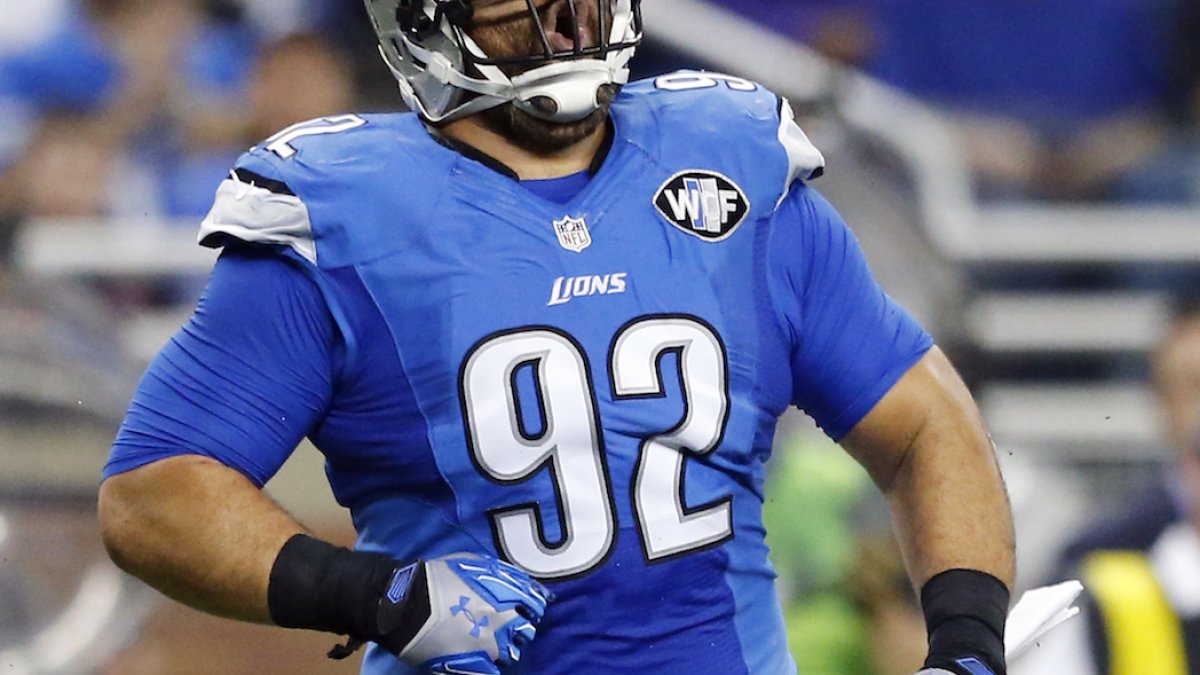The Lions struggled in the opening weeks of the 2015 season, but after some midseason changes, they greatly improved down the stretch and finished with a 6-2 record over the second half of the year. They still missed the playoffs and have work to do to get better in what appears to be a very strong division. However, a couple retirements after the season set the team back even further. Now with the offseason mostly over, let’s take a look at how Detroit has fared thus far:
Offseason grade: C+
Free agency/Trades
New arrivals: WR Marvin Jones, RB Stevan Ridley, G Geoff Schwartz, S Tavon Wilson, S Rafael Bush, DT Stefan Charles, CB Johnson Bademosi, LB Jon Bostic, WR Andre Caldwell, WR Jeremy Kerley, DE Wallace Gilberry
Re-signings: DI Haloti Ngata, LB Tahir Whitehead
Departures: WR Calvin Johnson, CB Rashean Mathis, S Isa Abdul-Quddus, RB Joique Bell
The Lions started the offseason behind the eight-ball with Calvin Johnson’s retirement. His decision is a massive loss for the team, as he is a player that is impossible to replace. Tasked with just that, Detroit went out and signed the best available free-agent wide receiver in a weak market at the position. Marvin Jones is not going to have the impact Johnson was capable of, but he helps mitigate the loss of Johnson better than any other option available at the time. Detroit also lost Rashean Mathis to retirement, and even though it’s not anywhere near the loss of Johnson, Mathis was the 10th-ranked coverage corner in 2014, and was still playing well last year before a season-ending concussion.
Among the team’s other free agent signings are the oft-injured Geoff Schwartz and Stevan Ridley. Schwartz has graded positively in every season he has played since 2009 (he did not play in 2011), and is a fine player when healthy. Unfortunately, he’s played more than 700 snaps just once in his career, and over 300 only three times. Expectations should be low for him, but as poor as the line was last year, at the very least Schwartz provides capable depth at both guard and tackle, and could potentially push for a starting spot if he proves to be healthy. Ridley replaces Joique Bell, who had not been quite as effective of late, and had his role in the passing game diminished. Ridley has played just 275 snaps over the past two years, but has graded positively as a runner for four consecutive seasons when on the field. With Theo Riddick and Ameer Abdullah getting the large portion of snaps, maybe a lesser workload for Ridley will help him stay healthy.
2016 NFL draft
- Round 1 (pick No. 16) Taylor Decker, OT, Ohio State
- Round 2 (pick No. 46) A’Shawn Robinson, DT, Alabama
- Round 3 (pick No. 95) Graham Glasgow, C, Michigan
- Round 4 (pick No. 111) Miles Killebrew, S, Southern Utah
- Round 5 (pick No. 151) Joe Dahl, G, Washington State
- Round 5 (pick No. 169 from Denver) Antqione Williams, ILB, Georgia Southern
- Round 6 (pick No. 191) Jake Rudock, QB, Michigan
- Round 6 (pick No. 202 from Seattle) Anthony Zettel, DE, Penn State
- Round 6 (pick No. 210) Jimmy Landes, LS, Baylor
- Round 7 (pick No. 236) Dwayne Washington, RB, Washington
Offensive line was a huge need for Detroit, and they addressed an O-line position each day of the draft. In the first round, we thought the Lions reached for Decker, whom we had graded as a late second-round prospect, when there were better tackles still available. That’s not to say we don’t think he can’t be a good player. He’s an exceptional blocker in the run game, an area Detroit really struggled in last season. However, his pass-blocking grade was slightly above average the past two years, and last year’s mark ranked 37th in the draft class. With pass protection at a premium these days, and Detroit’s offensive line already ranking as average in pass-blocking efficiency, Decker’s pass-blocking performance will be a big question mark heading into the season.
In the third round, they chose a player in Graham Glasgow who has made some impressive blocks in college. He can struggle at times with the easier blocks, but has decent potential and could compete for the starting center job with Travis Swanson, whose overall grade ranked 34th out of 40 qualifying centers in 2015. Their fifth-round pick, Joe Dahl, will likely need to kick in to guard after playing tackle in Washington State’s pass-heavy spread offense, but he had the 10th-highest overall grade among draft-eligible OTs.
A’Shawn Robinson was a good value in the second round. He was not the most effective pass-rusher in college, but he has been stout in run defense, grading as the 13th-best interior defender in the nation each of the past two years. Robinson will give the defensive line some much-needed depth, and can at least be an effective two-down player early on.
Conclusion
Any offseason that begins with an unexpected retirement by a future Hall-of-Famer is going to be tough to overcome. Johnson’s retirement did have the bittersweet benefit of freeing up cap space for new general manager Bob Quinn, however. Quinn brought in the best wide receiver he could to try to replace Johnson, even if he probably overpaid to sign Jones. The offensive line still might not be completely resolved, but Quinn also made a concerted effort to address the line’s struggles that plagued the offense for much of the year. One area that was not addressed is cornerback depth beyond Darius Slay and Quandre Diggs. Both players had good 2015 campaigns, but in a division that runs as much 11-personnel sets as the teams in the NFC North, a reliable third corner is a must, and Nevin Lawson has not proven he is that guy.


 © 2025 PFF - all rights reserved.
© 2025 PFF - all rights reserved.